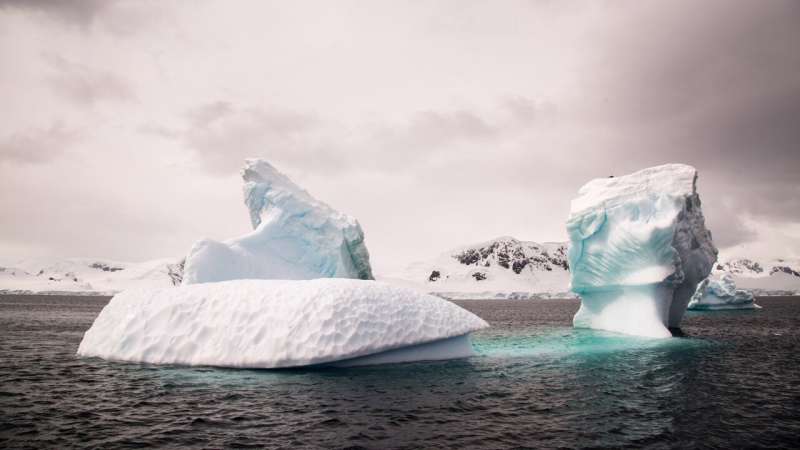How much will our emissions have an impact on future Antarctic ice loss?

While the impact of emissions on Antarctic ice melt may not become clear for another hundred years, the consequences of the climate decisions made this decade will be felt for centuries.
This is the key finding of new research published today by climate experts at GNS Science and Te Herenga Waka—Victoria University of Wellington's Antarctic Science Platform National Modelling Hub.
The study, led by GNS Science's Dr. Dan Lowry, represents a new approach to understanding Antarctic Ice Sheet change and its potential to raise sea level by multiple meters. It paves the way for clearer projections of the future of the Antarctic Ice Sheet.
"Our ability to predict how much and how quickly Antarctic Ice Sheet melt will occur is limited by our understanding of the ice sheet" says Dr. Lowry.
Traditionally, researchers use numerical models to understand how ice sheets flow under different climate states. These models rely on assumptions in areas of uncertainty—like the internal structure of the ice and conditions of the bedrock and sediment beneath the ice—which impact how sensitive a modeled ice sheet is to climate change.
To overcome these uncertainties, the team of researchers developed a statistical emulator based on the data of hundreds of ice sheet models. With the emulator, they explored thousands of scenarios that could affect future sea level projections; something ice sheet simulations cannot do in a reasonable amount of time.
"By combining ice sheet models and an emulator, we are more certain about unobservable processes happening underneath Antarctica's ice sheet" says co-author Dr. Mario Krapp, also from GNS Science.
The team produced projections based on both a low-emissions scenario, in which global carbon emissions were reduced quickly over the next few decades, and a high-emissions scenario in which emissions kept increasing to the end of the century.
"There was substantial overlap in plausible ice sheet contributions to sea level for the two emissions scenarios in this century" says Dr. Lowry.
But by 2300, the different outcomes of the different emissions scenarios were crystal clear.
"Under the high emissions scenario, the rate of sea level rise was double what it was under the low emissions scenario—with the Antarctic Ice Sheet contributing over 1.5m more to global sea level in the high emissions scenario, due to the collapse of the West Antarctic Ice Sheet."
The earliest warning sign of a future with a multi-meter Antarctic contribution to sea level rise is widespread thinning of Antarctica's Ross and Ronne-Filchner ice shelves.
"These shelves hold back the land-based ice, but as they thin and break off, this resistance weakens, allowing land-based ice to more easily flow into the ocean" Dr. Lowry explains.
"Without these shelves, the West Antarctic Ice Sheet collapses."
In a high emissions scenario, this widespread ice shelf thinning occurs within the next few decades. But more importantly, the thinning does not occur under a low emissions scenario and the majority of the West Antarctic Ice Sheet remains intact.
"Our results highlight the urgency of reducing carbon emissions and the long-term consequences of failing to do so" cautions Dr. Lowry.
"Even if we meet the Paris Agreement target, the long memory of Antarctica means we should still expect to see melting of the Antarctic Ice Sheet for centuries and millennia to come.
"To avoid the worst impact on coastal communities around the world, planners and policy makers need to develop meaningful adaptation strategies and evaluate mitigation strategies for the ongoing threat of sea level rise."
More information: Daniel P. Lowry, Mario Krapp, Nicholas R. Golledge and Alanna Alevropoulos-Borrill, The influence of emissions scenarios on future Antarctic ice loss is unlikely to emerge this century, Communications Earth & Environment (2021). DOI: 10.1038/s43247-021-00289-2
Journal information: Communications Earth & Environment
Provided by Victoria University of Wellington



















